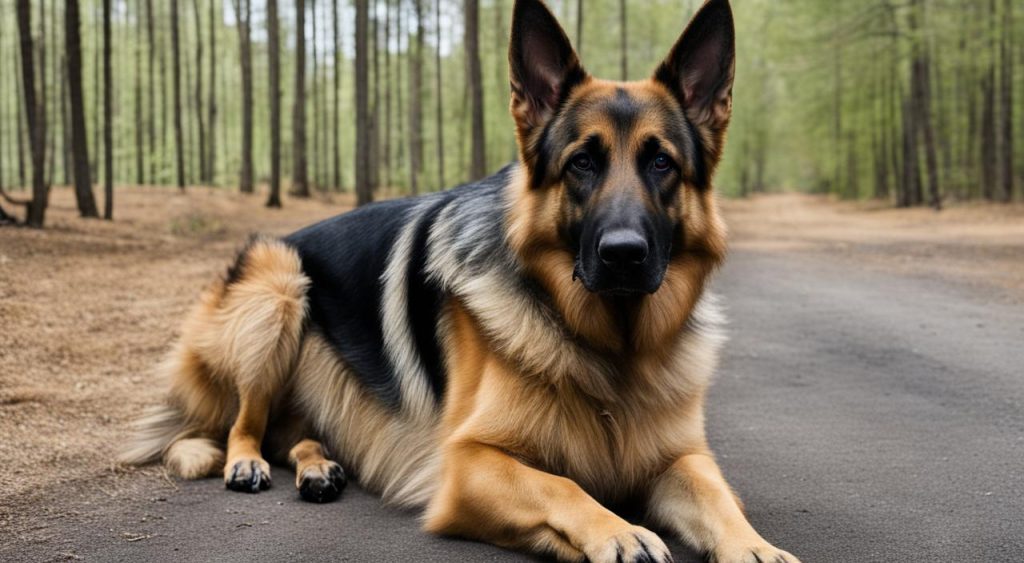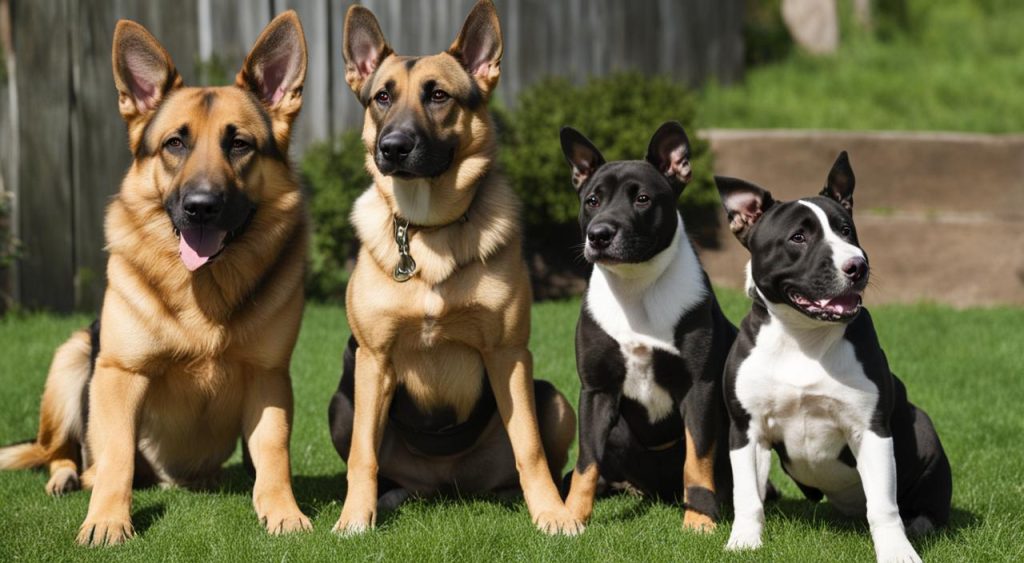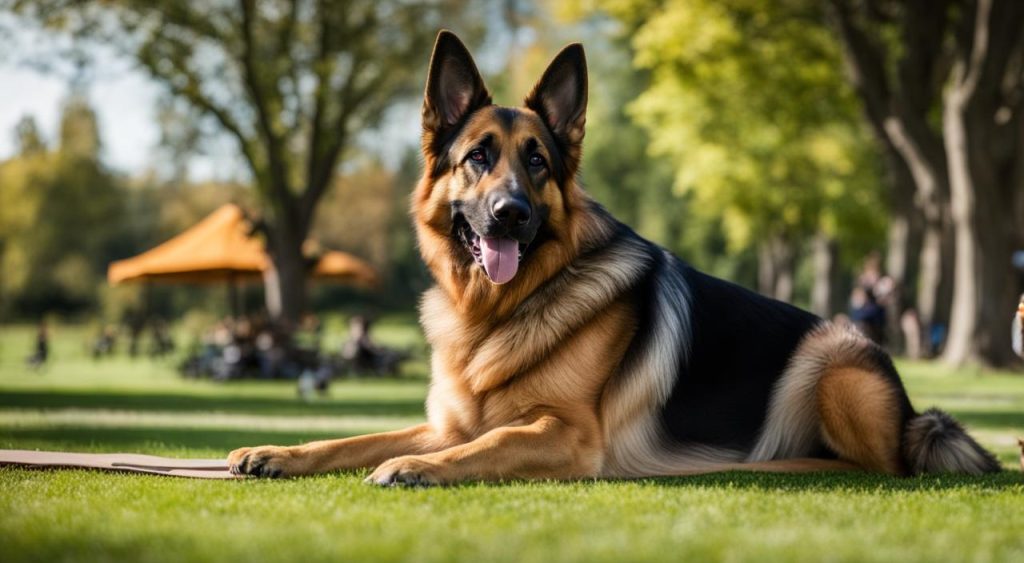German Shepherds are a popular breed known for their intelligence, loyalty, and striking appearance. Before deciding to bring a German Shepherd into your home, it is important to consider the pros and cons associated with owning this breed.
On the positive side, owning a German Shepherd comes with numerous benefits. These dogs are not only beautiful but also athletic, making them excellent companions for an active lifestyle. They are highly versatile and trainable, capable of learning a wide range of commands and tasks. German Shepherds are also known for their loyalty and devotion to their families, making them excellent guard dogs and reliable protectors.
However, owning a German Shepherd does have its drawbacks. One of the main challenges is the need for extensive exercise and mental stimulation. German Shepherds have a high energy level and require regular physical activity to prevent boredom and behavioral issues. Additionally, their intelligence and desire to work can lead to destructive behaviors if not provided with enough mental stimulation.
Another disadvantage of owning a German Shepherd is their potential for aggression if not properly socialized. It is crucial to expose them to various people, animals, and environments from a young age to ensure they develop into well-rounded, friendly dogs. Additionally, German Shepherds have a double coat that sheds heavily, requiring regular grooming to keep their fur under control.
Lastly, potential owners should be aware that German Shepherds are prone to certain health issues, such as hip dysplasia, which can be costly to treat. Regular veterinary care and a proper diet are essential to ensure the well-being of these dogs.
Key Takeaways:
- German Shepherds are intelligent, athletic, and loyal.
- They require extensive exercise and mental stimulation.
- Socialization is crucial to prevent aggression.
- Grooming is necessary to manage their heavy shedding.
- They are prone to certain health issues.
German Shepherd Temperament and Behavior
The temperament and behavior of German Shepherds are shaped by their breed’s history and purpose. They were originally bred as versatile working dogs, including tasks such as herding sheep, military work, and serving as police and personal protection dogs. These roles have influenced their natural traits and instincts.
German Shepherds are known for their athleticism and are often driven by a strong compulsion to chase moving objects. This behavior stems from their herding background, where they needed to control and corral livestock. Additionally, German Shepherds can be somewhat aloof toward strangers, as they were bred to be cautious and wary of unfamiliar individuals.
Furthermore, these dogs exhibit strong protective instincts, an innate characteristic necessary for their roles in military and law enforcement. They are renowned for their loyalty and devotion to their families, making them excellent guard dogs and companions.
German Shepherds are highly intelligent and display exceptional trainability, making them well-suited for various specialized tasks. They excel in search and rescue operations, bomb and drug detection, and even guiding the blind, showcasing their intelligence, focus, and versatility.
However, it is important to recognize that finding a German Shepherd with an ideal temperament can be challenging. Some breeders may prioritize appearance over temperament and trainability, leading to variations in behavior among German Shepherds. It is crucial for potential owners to be aware of these temperament differences and carefully select a breeder who emphasizes calmness and high trainability.
Alternatively, individuals seeking a milder temperament may consider longhaired or solid white German Shepherds. These variations within the breed are known for their generally more laid-back and easygoing personalities.
German Shepherd Size and Different “Types”
German Shepherds are a medium-to-large-sized breed, with males standing about 24-26 inches at the shoulder and weighing 75-110 pounds, and females standing about 22-24 inches and weighing 65-90 pounds. These majestic dogs have a powerful presence and an impressive build.
However, there are variations within the breed that go beyond just size. German Shepherds can be classified into different “types,” each with its own unique characteristics.
Show lines often prioritize appearance over temperament and may result in dogs with hyperactivity or skittishness. These dogs are bred to conform to the breed standard, with an emphasis on physical traits such as the head shape and coat color. While they may excel in the show ring, their temperament may be less stable, requiring careful training and socialization.
On the other hand, working lines of German Shepherds are more similar to the traditional German Shepherd in both appearance and behavior. These dogs are bred for their working abilities and tend to have a more stable temperament. They are often used in various working roles such as police dogs, search and rescue dogs, and service dogs. With proper training and exercise, they can make excellent companions.
Another variation within the breed is the longhaired German Shepherd. While the coat type is different, longhaired German Shepherds are still part of the same breed. These dogs have a softer and longer coat compared to the standard short-haired German Shepherd. They may have a milder temperament, but caution should be taken to avoid individuals that are overly soft.
Understanding the different types of German Shepherds is important when choosing the right dog for you. Whether you prefer a show line German Shepherd with striking looks or a working line German Shepherd with a more balanced temperament, there is a German Shepherd type that can fit your lifestyle and preferences.
Conclusion
Owning a German Shepherd can be a fulfilling experience for individuals seeking a loyal, intelligent, and versatile companion. Their admirable traits make them well-suited for various roles and activities, enriching the lives of their owners. However, potential owners must carefully consider the responsibilities and challenges that come with German Shepherd ownership.
German Shepherds require regular exercise and mental stimulation to thrive, making them a better fit for active individuals or families. Additionally, their dense double coat requires frequent grooming to manage shedding and maintain their coat’s health. Prospective owners must also be aware of potential health issues that German Shepherds are prone to, such as hip dysplasia, and be prepared for the associated expenses.
Furthermore, German Shepherds require proper socialization and training to prevent behavioral issues, as they can exhibit aggression if not well-socialized. It is crucial to invest time and resources into training and socializing a German Shepherd from an early age to ensure a well-behaved pet. To mitigate potential temperament problems, it is advisable to purchase from a reputable breeder who prioritizes temperament and health.
Ultimately, owning a German Shepherd can be a rewarding experience for those willing to devote the necessary care, time, and resources. Before making the decision to bring a German Shepherd into your home, thoroughly research the breed and consider your own lifestyle, preferences, and capabilities. With proper care, attention, and responsible ownership, a German Shepherd can become a cherished and beloved member of your family.





